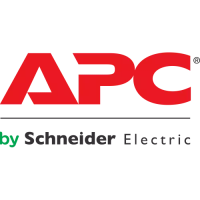Page 3 1/25/2013
B. Battery: Upon failure of the AC input source, the critical load shall continue being supplied by
the output inverter, which shall derive its power from the battery system. There shall be no
interruption in power to the critical load during both transfers to battery operation and
retransfers from battery to normal operation.
C. Recharge: Upon restoration of the AC input source, the input converter and output inverter
shall simultaneously recharge the battery and provide regulated power to the critical load.
D. Static Bypass: The static bypass shall be used to provide transfer of critical load from the
Inverter output to the bypass source. This transfer, along with its retransfer, shall take place
with no power interruption to the critical load. In the event of an emergency, this transfer shall
be an automatic function.
E. Maintenance Bypass: The system shall be equipped with an external make-before-break
Maintenance Bypass Cabinet (MBC) to electrically isolate the UPS during routine maintenance
and service of the UPS. The MBC shall completely isolate both the UPS input and output
connections.
2.4 ELECTRICAL CHARACTERISTICS
A. Input power converter:
1. The input power converters of the system are housed within the parallel connected, remo-
vable power modules, and shall constantly control the power imported from the mains input
of the system, to provide the necessary UPS power for precise regulation of the DC bus vol-
tage, battery charging, and Main Inverter regulated output power.
2. Input Current Total Harmonic Distortion: The input current THD
shall be held to 5% or
less at full system, while providing conditioned power to the critical load bus, and charging
the batteries under steady-state operating conditions. This shall be true while supporting
loads of both a linear or non-linear type. This shall be accomplished with no additional fil-
ters, magnetic devices, or other components
3. Soft-Start Operation: As a standard feature, the UPS shall contain soft-start functionality,
capable of limiting the input current from 0-100% of the nominal input over a default 15 se-
cond period, when returning to the AC utility source from battery operation. The change in
current over the change in time shall take place in a linear manner throughout the entire
operation. (di/dt= constant).
4. Magnetization Inrush Current: The UPS shall exhibit 0 inrush current as a standard pro-
duct. If provided with an optional isolation transformer, inrush shall be limited to 6 times the
nominal input current of the transformer.
5. Input Current Limit :
a. The input converter shall control and limit the input current draw from utility to 150% of
the UPS output. During conditions where input current limit is active, the UPS shall be
able to support 100% load, charge batteries, and provide voltage regulation.
b. In cases where the source voltage to the UPS is nominal and the applied UPS load is
equal to or less than 100% of UPS capacity, input current shall not exceed 125% of
UPS output current, while importing necessary power for system losses.
6. Charging:
a. The battery charging shall keep the DC bus float voltage of +/- 218v, +/-1%.
b. The battery charging circuit shall contain a temperature compensation circuit, which will
regulate the battery charging to optimize battery life.
c. The battery charging circuit shall remain active when in requested Static Bypass and in
Normal Operation.
7. Back-feed Protection: The above-mentioned logic controlled contactor also provides the
back-feed protection.
B. Output inverter:
1. The UPS output inverter shall constantly recreate the UPS output voltage waveform by
converting the DC bus voltage to AC voltage through a set of IGBT driven bi-directional po-
wer converters. In both normal operation and battery operation, the output inverters shall
create an output voltage independent of the mains input voltage. Input voltage anomalies
such as brown-outs, spikes, surges, sags, and outages shall not affect the amplitude or si-
nusoidal nature of the recreated output voltage sine wave of the output inverters.
2. Overload Capability: The output power converters shall be capable of 1000% for short-
circuit clearing. Steady-state overload conditions, of up to 150% of system capacity, shall
be sustained by the inverter for 60 seconds in normal and battery operation. Should over-
loads persist past the outlined time limitation, the critical load will be switched to the auto-

